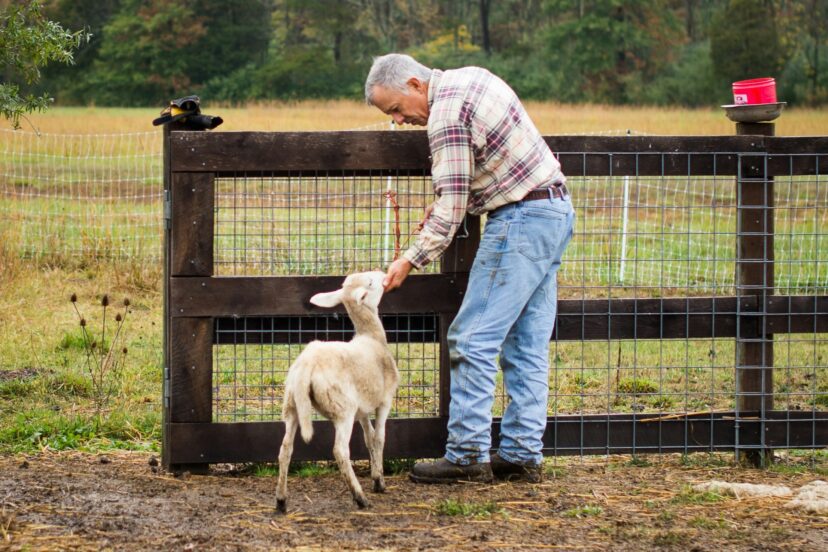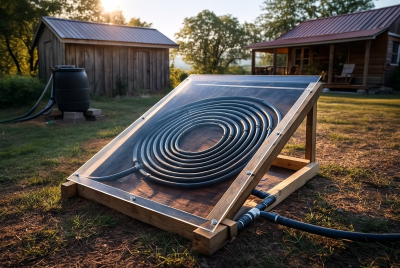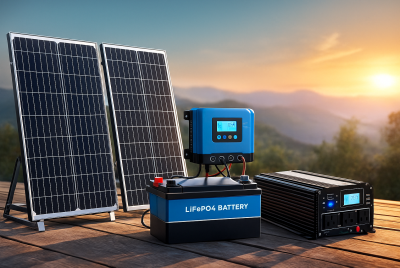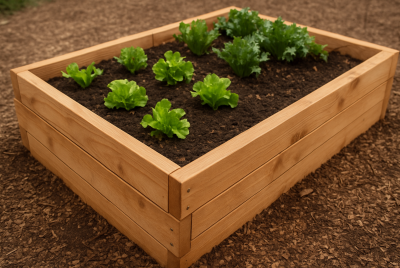How to Start Self Sufficient Homesteading Today
We may earn a commission for purchases made using our links. Please see our disclosure to learn more.
Do you want to grow your own food, raise some hens, and live more sustainably, but aren’t sure where to start? The idea of self-sufficient homesteading might seem scary at first, especially if you’ve never planted a seed or built anything with your own hands. But there’s good news: you don’t need a farm or years of experience to begin homesteading. With a little advice, some basic tools, and a willingness to learn, you can transform your backyard—or even a small patio—into a thriving, self-sufficient oasis. Let us break it down and make homesteading possible one small step at a time!
The Beauty of Starting Now
You may be asking yourself, “Isn’t this something people did in the past?” Well, the moment to embrace self-sufficient homesteading has never been greater. Get started is easier than ever thanks to a network of like-minded individuals, contemporary tools, and knowledge.
What is Self Sufficient Homesteading?
Basically, self-sufficient homesteading means growing most of your own food on your own property. You manage everything, including food, water, electricity, and even some items. Consider your house to be a thriving, productive mini ecosystem all by itself.
Recent research strongly supports the benefits of self sufficient homesteading. A study on individual nutritional self-sufficiency found that even small-scale, low-input farms can sustain long-term food needs with minimal labor, making homesteading more accessible than many believe.
Complementing this, a comprehensive review on urban farming systems highlights how homegrown food production enhances food security, promotes sustainability, and supports biodiversity—even in urban environments. Together, these findings reinforce that starting small and local can yield powerful results for both individuals and communities.
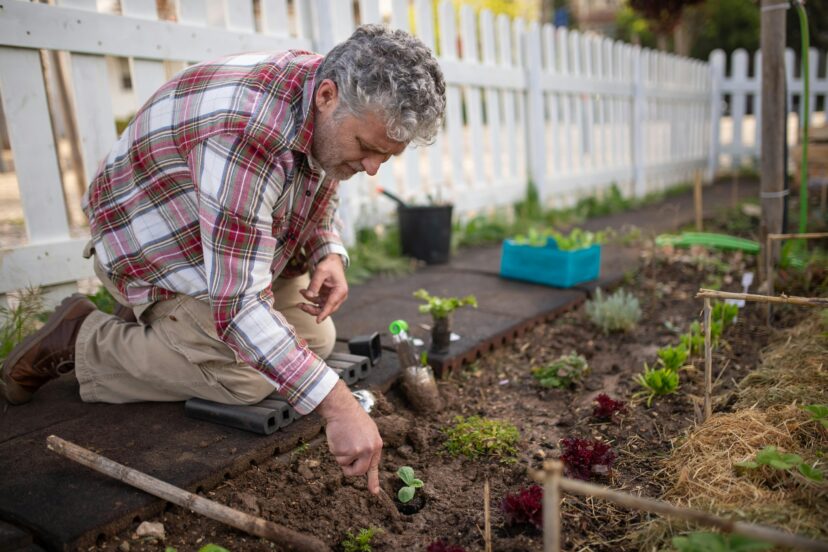
Assessing Your Current Situation
Before you dive in, take a time to reflect on the situation. Do you own land? If not, what amount can you afford? Your trip can begin in your own backyard. The size is less significant than your eagerness to learn and adapt.
Choosing the Right Location
Location plays a huge role. Look for:
- Access to water
- Fertile soil
- Mild climate (if possible)
- Affordable property taxes
- Community support
Think of it as finding the perfect stage for your self sufficient homesteading play.
Starting Small: The Key to Long-Term Success
It’s tempting to go all-in, but starting small is your secret weapon. Just like finding your balance on a bike, pacing yourself matters. Begin with a simple garden or raise a handful of chickens to get started. Master each step before taking on more. If you’re not sure where to begin with planting, try experimenting with chaos gardening. This easy, low-pressure approach lets nature guide your planting and can be a fun way to kick off your gardening journey.

Growing Your Own Food
Self sufficient homesteading thrives on food production. Start with easy crops: tomatoes, lettuce, carrots, and herbs. These give quick rewards and build your confidence. Over time, you can expand into:
- Fruit trees
- Berry bushes
- Root vegetables
- Grains
Raising Livestock
Once you’re comfortable, consider adding animals. They provide food, fertilizer, and even companionship. Popular choices include:
- Chickens for eggs and meat
- Goats for milk and weed control
- Rabbits for meat and fertilizer
- Bees for honey and pollination
Water: Your Lifeline
You can’t overlook water. Harvesting rainwater, digging a well, or creating ponds ensures you have a reliable supply. Set up a simple system to collect and store water for gardening and livestock.

Energy Independence
Imagine lowering or even eliminating your power bills. Solar panels, wind turbines, and even micro-hydro systems can generate renewable energy right on your property. Start small, perhaps with solar lighting or a few panels, and build as you learn.
Composting: Turn Waste into Gold
Nature wastes nothing. Neither should you. Composting kitchen scraps, garden waste, and animal manure creates nutrient-rich soil. Your garden will thank you with abundant harvests.
Building and Repairing: Essential DIY Skills
In self sufficient homesteading, becoming a jack-of-all-trades helps tremendously. Pick up some essential skills in carpentry, plumbing, and basic electrical work. Fixing a leaky pipe or building a chicken coop becomes a weekend project instead of a costly headache.
Food Preservation: Think Beyond the Harvest
You’ll often produce more than you can eat right away. That’s where food preservation shines. Techniques include:
- Canning
- Freezing
- Dehydrating
- Fermenting
- Smoking
Each method extends your harvest and keeps your pantry stocked year-round.
Financial Planning for Self Sufficient Homesteading
Let’s be real — self sufficient homesteading doesn’t eliminate expenses; it just shifts them. Budget for:
- Seeds and livestock
- Tools and equipment
- Property maintenance
- Renewable energy systems
- Emergency funds
Every dollar invested builds long-term resilience.
The Mental Shift: Embracing Simplicity
Homesteading isn’t just physical work; it’s a mindset. Are you ready to trade convenience for independence? To value experiences over stuff? This mental shift turns every challenge into a rewarding learning opportunity.
Creating a Support Network
You don’t have to go it alone. Connect with:
- Local farmers
- Homesteading groups
- Online forums
- Cooperative extensions
Sharing advice, trading goods, and learning from others will make your journey smoother and more enjoyable.
Teaching Your Family the Homesteading Way
Get everyone involved. Kids can plant seeds, collect eggs, and learn valuable skills. Homesteading creates strong family bonds and teaches responsibility, patience, and appreciation for nature.
Staying Legal and Safe
Check local regulations before making major changes. Zoning laws, livestock limits, and building codes vary. Staying compliant prevents headaches down the road.
Dealing with Setbacks
Things will go wrong. Some crops won’t thrive. Now and then, animals may fall ill. Equipment will break. Take a deep breath and remember: setbacks are part of the journey. Every failure teaches you something new.
Recommended Tools to Kickstart Your Self Sufficient Homesteading
Starting your homestead is much easier when you have the right tools at your side. Here are five essentials that can make your journey smoother from day one:
- Raised Garden Bed Kits – Perfect for beginners, these kits make gardening manageable, organized, and more productive, even in small spaces.
- Solar Power Starter Kit – A small solar panel system is a great first step toward energy independence, providing power for lighting, small appliances, or charging stations.
- Compost Tumbler Bin – Turn kitchen scraps and garden waste into nutrient-rich compost quickly and easily without the mess of a traditional pile.
- Chicken Coop Starter Kit – If you’re adding chickens to your homestead, a ready-to-assemble coop saves time and gives your flock a safe, secure home.
- Rainwater Harvesting System – Capture and store rainwater for your garden or livestock, reducing dependence on municipal water supplies.
Conclusion
So, are you ready to take control of your life? Self sufficient homesteading offers you freedom, resilience, and a deep connection to the earth. Start small, keep learning, and enjoy every step of the journey. Remember, your homestead doesn’t have to be perfect to be powerful.
FAQs
1. Can I start self sufficient homesteading with no prior experience?
Absolutely! Many successful homesteaders started as complete beginners. Begin with small steps. Learn along the way. Mistakes are part of the process.
2. What’s the ideal amount of land to start self sufficient homesteading?
Even a quarter acre is enough to get your homestead journey started. Larger plots offer more opportunities, but even a small backyard can support a surprising amount of food production.
3. Is self sufficient homesteading expensive?
There are upfront costs, but many homesteaders find they save money in the long run by producing their own food and energy. Start with what you can afford and scale up gradually.
4. What if I live in a city or suburb?
Urban homesteading is a growing movement! Container gardening, vertical farming, and small livestock like rabbits or chickens are possible even in smaller spaces.
5. What is the hardest part of self sufficient homesteading?
The hardest part is often the mental adjustment. Letting go of instant convenience and embracing a slower, hands-on lifestyle takes time. But many find it incredibly rewarding.

